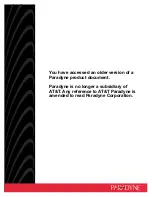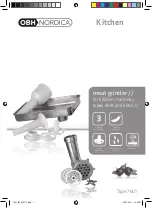
Model CXT-IR
CXT-IR Instruction Manual
Rev. 2.1
Page 1 of 48
Introduction
1.1
Description
Detcon Model CXT-IR combustible gas sensors are non-intrusive “Smart” sensors designed to
detect and monitor combustible hydrocarbon gases in the air with a detection range of 0-100%
LEL (Lower Explosive Limit). The sensor features an LED display of current reading, fault and
calibration status. A primary feature of the sensor is its method of automatic calibration, which
guides the user through each step via fully scripted instructions illustrated on the LED display.
The microprocessor-supervised electronics are enclosed in an encapsulated module and housed
in an explosion proof casting.
The unit includes:
•
a built in 2.4GHz radio to transmit status wirelessly to a controller,
•
a four character alpha/numeric LED to display sensor readings, and
•
a menu-driven interface when the hand-held programming magnet is in use.
•
an optional strobe
Non-Dispersive Infrared (NDIR) Optical Sensor Technology
The sensor technology is designed as a miniature plug-in replaceable component, which can easily be changed
out in the field.
The NDIR sensor consists of (Figure 1):
•
one infrared lamp source,
•
two pyroelectric detectors (active and reference),
•
and one optical gas sample chamber.
The lamp source produces infrared radiation, which interacts with the target gas as it is reflected through the
optical gas sample chamber. The infrared radiation contacts each of the two pyroelectric detectors at the
completion of the optical path. The active pyroelectric detector is covered by a filter specific to the part of the
IR spectrum where the target gas absorbs light. The reference pyroelectric detector is covered by a filter specific
to the non-absorbing part of the IR spectrum. When the target gas is present, it absorbs IR radiation and the
signal output from the active detective decreases accordingly. The reference detector output remains unchanged.
The ratio of the active and reference detector outputs are then used to compute the target gas concentration.
The technique is referred to as non-selective and may be used to monitor most any combustible hydrocarbon
gas. Unlike catalytic bead type sensors, Detcon IR sensors are completely resistant to poisoning from corrosive
gases and can operate in the absence of an oxygen background. The sensors are characteristically stable and
capable of providing reliable performance for periods exceeding 5 years in most industrial environments.






































